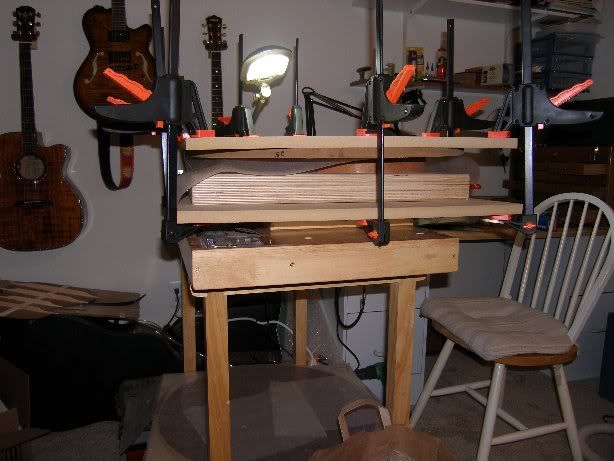I use my radius dishes for gluing on tops and backs. I only use one. For example, when gluing on the back (which I do first), I apply glue to the rim, position the back on the rim, tape it in place with a few pieces of tape, flip it over so the back is on the bottom, place it on the dish, then put go bars directly onto the linings on the top side of the rim. Works great. Simple. Easy. No problems.
I do the same for the top, putting the go bars directly onto the back, over the linings. I have not seen any need for a caul between the go bars and the guitar.
|


